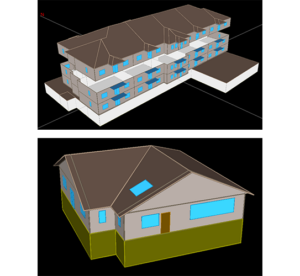Engineering
Energy Modeling Services
 Many Canadian jurisdictions require new and renovated buildings and to conform with energy efficient design and construction requirements set out in a provincial or national energy code. These codes allow for three methods of compliance: prescriptive, trade-off, or performance path.
Many Canadian jurisdictions require new and renovated buildings and to conform with energy efficient design and construction requirements set out in a provincial or national energy code. These codes allow for three methods of compliance: prescriptive, trade-off, or performance path.
Performance path compliance of a building with the relevant energy code is demonstrated by way of energy modelling. These building codes utilize relative compliance standards through comparison to a reference building. This means a proposed building’s compliance is relative to the energy consumption of the reference model.
Energy efficiency reduces the environmental burdens associated with producing and using energy. Building energy simulation plays a key role in the integrated design of high-performance buildings to minimize such environmental impacts. The creation of complete and relevant documentation detailing the methods and assumptions used in building energy simulation is vital to understanding the results of the simulation models.
GSS Engineers specialized experience with integrated electrical and thermal microgrids can provide comprehensive reports to evaluate the energy performance of a building or development.
Using eQuest 3.65 and TRNSYS, GSS is able to accurately model a building’s energy consumption accounting for factors such as:
• Construction materials
• Insulation
• HVAC efficiency
• Solar radiation
• Ground temperatures
• Historical weather data
• Area usage

